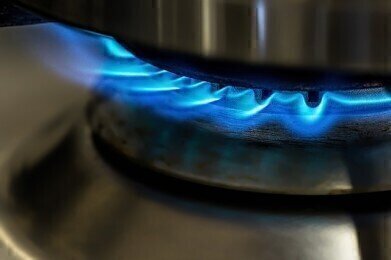Analytical Instrumentation
What's the Difference Between LPG and LNG?
Oct 07 2019
While liquified petroleum gas (LPG) and liquified natural gas (LNG) both exist as gases at normal temperature and pressure points, and share similar names and acronyms, they are also unique in their own right. Read on for an introduction to the pair and an overview of the major similarities and differences.
LPG explained
Also known as propane or butane, LPG is highly flammable and composed of a mix of hydrocarbon gases. It's readily available around the world and is lauded as a clean, energy efficient and portable fuel with an affordable price tag. Primary uses for LPG include powering heating appliances and cooking equipment, as well as fuelling vehicles. Currently, most LPG is sourced from natural gas and oil production activities. However, in the wake of new technologies and techniques, LPG is also being increasingly produced from renewable sources.
LPG is rapidly gaining popularity, as explored in the recent Global Liquefied Petroleum Gas (LPG) Cylinder Market 2019-2023 report distributed by Technavio. The London based market research and advisory company predicts that increased use of LPG across a diverse range of applications will boost demand and see the global market for LPG cylinders exceed US$313 million by 2023.
LNG explained
LNG describes natural gas that has been chilled to liquid form. This process transforms natural gas into a non-pressurised material that's safe, easy and cost effective to transport and store. It occupies around 1/600th the volume of natural gas, making it a space efficient alternative. LNG is colourless, odourless and non-toxic which earns it eco-friendly credentials. It's also non-corrosive, making it the fuel of choice for operating sensitive and expensive equipment and machinery.
The major differences
- Light pressure is used to liquefy LPG, while LNG is liquefied cryogenically, i.e. through exposure to extremely low temperatures
- LPG is stored, shipped and transported in tanks or cylinders, whereas LNG is stored and shipped in purpose built cryogenic tanks. Pipelines are usually used to transport LNG.
- The need for cryogenic storage, coupled with infrastructure requirements such as production plants, dispensing stations and pipeline transport facilities, means LNG is not a viable option in many developing nations.
For more information on the rapidly growing LPG industry, and how researchers and engineers are overcoming challenges, don't miss 'A new analytical procedure for water content in LPG', which introduces a new analytical procedure and offers expert commentary from Karl Robertson, Dr. Michael Hahn and Dorit Wilke.
Digital Edition
PIN 25.1 Feb/March
March 2024
In This Edition Safety - The technology behind the ION Science Tiger XT - Safety with ammonia and LOHCs as hydrogen carriers Analytical Instrumentation - Discussion on new tribology te...
View all digital editions
Events
Apr 30 2024 Birmingham, UK
May 03 2024 Seoul, South Korea
May 05 2024 Seville, Spain
May 06 2024 Riyadh, Saudi Arabia
May 06 2024 Houston, Tx, USA


















